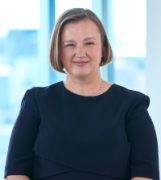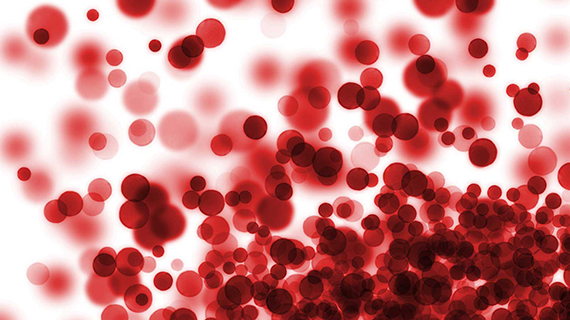Nine for 2019: Opportunities for pharma

In the last Nine for 2019 article, we reflected on the major challenges that are shaping the pharmaceutical industry for this year and beyond.
While it is fair to say that the global pharmaceutical market is under enormous pressure, there are also numerous opportunities arising from new innovations and major changes to the global market.
In this article we look at five key areas that pharma will harness for success over the next year and beyond.
1) Further roll-out of cell therapy
2019 will be the year when cell and gene therapies, the leading edge of the next generation biologic therapies, are here to stay as a commercial proposition.
Scott Gottlieb, the former FDA Commissioner, stated that the number of Investigational New Drugs (INDs) for cell and gene therapies will likely pass 400 in 2019 and then pass 800 before 2021. As next generation biologic therapies launch, cutting edge science must meet commercial reality, highlighting the considerable differences in treatment logistics, funding, evaluation and outcomes these treatments will have to previous pharmaceutical technologies.
The biggest challenge will be cost. These pioneer therapies are establishing at a time of slowing growth in innovative product sales opportunity in the developed world. Novartis has already laid out its plans for rolling out Kymriah to China, which has historically been a challenging market to get significant uptake for any innovative therapies, and Novartis has also announced it will be working on bringing manufacturing costs down to drive improved access.
Another big determinant of whether clinical promise will be realised is whether savings can be made in other, older parts of the pharmaceutical market. This savings will need to be substantial and critical for 2019 will be how savings from biosimilars play out.
2) Focus on biosimilars
In a low growth pharmaceutical market, innovation can only realise its full potential if older parts of the market lose exclusivity and become less expensive. Small molecule brands saw a wave of major genericisations from 2011, and the cost savings impacts have since been exhausted within that category. Since the 2015 launch of biosimilar infliximab, the focus of cost savings potential has moved to the older biologics.
Biosimilars have been available for more than a decade in Europe, have approval pathways and are launched in the largest biologic market, the US, as well as within a growing number of other countries. Nevertheless, the current value of biosimilar pathway approved products is only $7.3bn, pre-rebates and discounts. There’s still a substantial way to go, and therefore focus in 2019 will be on the impact of a biosimilar Humira (adalimumab).
While the European loss of exclusivity for Humira (adalimumab) occurred in 2018, the full impact of this event will be realised in 2019. Humira is currently the largest selling prescription medicine in the world, and one of the top five highest selling medicines of all time, making this the largest ever biosimilar opportunity, and the litmus test for whether biosimilars truly will provide substantive cost savings for healthcare systems seeking relief from inexorable budget pressures.
In November 2018 the UK’s NHS announced it would expect to save £300m of drug spend in England by deals with five biosimilars manufacturers on biosimilar adalimumab as Humira went off patent – clearly expecting that many patients would switch to the biosimilar very rapidly. Will these potential savings translate into greater spend on innovation within the UK and other countries?
The European experience is a harbinger for the real opportunity – the US market. Biosimilars entered the US late because of a slower-to-establish regulatory framework. Now that biosimilar pathways are present within the US, their impact has been patchy. The 2019 European biosimilar adalimumab experience will be a rehearsal for 2023, when Humira loses exclusivity in the US.
3) A new era for Chinese regulation
This year will usher in a new era for the Chinese market, a shift of market value in favour of innovation and specialty.
IQVIA’s MIDAS data shows that China, alongside all the other key emerging countries, has historically contributed very little to the first five years of new innovation’s global sales, even allowing for later Chinese launch, a consequence of an underfunded and inefficient China Food and Drug Administration.
In 2018, the newly formed National Medicines Products Administration (NMPA) approved a record 48 new products, fast-tracked because those medicines had already been approved within the US and Europe. It’s projected that in 2019 we will see an acceleration of this major change to the Chinese pharmaceutical environment, which, as China is the world’s second largest market, will have far reaching global consequences.
Chinese reforms on their medicines and clinical trials regulation will make it easier to set up clinical trials in China, speed the approval of medicines and encourage the approval of innovative new medicines.
Innovation will increasingly come from Chinese origin companies. Innovative approvals must still be combined with effective funding to improve uptake and commercial return. The sharp rise in private medical insurance is one solution to this. The other is the same as in developed markets: reduce spend on what is older and off patent.
China has had non-original biologics before, but early 2019 saw the launch of the first “true” biosimilar. Extremely tough tendering processes could encourage the uptake of lowest cost generics in multi-source markets, targeting the older brands which are a cornerstone of much multinational Chinese business.
The circumstances are right for the world’s second largest pharmaceutical market to see substantial change. China is number two in world rankings for overall pharma market size, but number 30 in world rankings for new innovative medicine spend. Substantial improvement in ranking would help reduce the global pharmaceutical market’s over-dependence on the US.
4) Real world data expands its range
Real world data (RWD) regarding the use and outcomes of prescription medicines has an established and important role in the uptake and use of medicines. The range of RWD that can be used will shortly undergo substantial expansion from the core of traditional patient records.
Upstream, 2019 will see expansion of RWD at the high science end, with increasing volume of de-identified genomic/biomarker data collected, available and, most importantly, integrated with non-identified patient records. This allows very powerful insights into the role genetics play in treatment outcomes.
Downstream, non or de-identified patient-generated data, for example from wearables, apps or smart devices, are increasing in volume. Simultaneously, software, including natural language processing to analyse this unstructured, complex data and generate meaning is also improving significantly.
RWD expands its range and utility, but in contrast to clinical trial data, it is limited by the lack of widely agreed and accepted standards and protocols to generate consensus and trust across regulators and health technology assessors. This is likely to change in 2019 as proposals for how a consensus standard might work are discussed.
5) Digital within a multichannel approach to HCP engagement
Digital technologies have transformed how healthcare professionals receive information and communicate on pharmacotherapies, and a significant proportion of that shift deals with their engagement with pharmaceutical companies.
Digital promotion has allowed pharma to reduce costs, increase communication reach and engagement, and create a more flexible and personalised approach to their audiences.
However, the multichannel marketing revolution has not been uniform across key markets: promotional audits show that Europe significantly lagged the US and Japan in volume share of digital promotional activity to doctors. Whilst digital does not automatically equal multichannel, it is a marker of multichannel maturity.
Last year saw the gap between the percentage of pharma promotional activity (in volume) that’s digital (average 15% across the five major markets) and the percentage of doctors that state they prefer digital channels of communication from pharma (average 21% across the five major markets) narrow. We believe 2019 could be the year when the gap closes.
Exciting times
Vladimir Illyich Lenin once said: “There are decades where nothing happens; and there are weeks where decades happen.” The pressures in the global pharmaceutical market have in some cases been building for decades.
Pressures such as addressing the significance of the US market, or managing R&D costs and complexities are not going to resolve in a week, but 2019 shows the seeds of change in a new direction for China, the world’s second largest market, digital technology driven rapid evolution of approaches to managing clinical development, real world data collection and use, and even the nature of the therapeutic innovation under development.
Combine this with ongoing efforts to address costs via biosimilars and fund truly exciting new pharmacotherapies, and the wild cards of Brexit and M&A, and the second half of 2019 could be an exciting time to be in the pharmaceutical industry.
About the Author
 Sarah Rickwood has 26 years’ experience as a consultant to the pharmaceutical industry, having worked in Accenture’s pharmaceutical strategy practice prior to joining IQVIA. She has wide experience of international pharmaceutical industry issues, having worked most of the world’s leading pharmaceutical companies on issues in the US, Europe, Japan, and leading emerging markets, and is now vice president, European thought Leadership at IQVIA, a team she has run for eight years.
Sarah Rickwood has 26 years’ experience as a consultant to the pharmaceutical industry, having worked in Accenture’s pharmaceutical strategy practice prior to joining IQVIA. She has wide experience of international pharmaceutical industry issues, having worked most of the world’s leading pharmaceutical companies on issues in the US, Europe, Japan, and leading emerging markets, and is now vice president, European thought Leadership at IQVIA, a team she has run for eight years.












